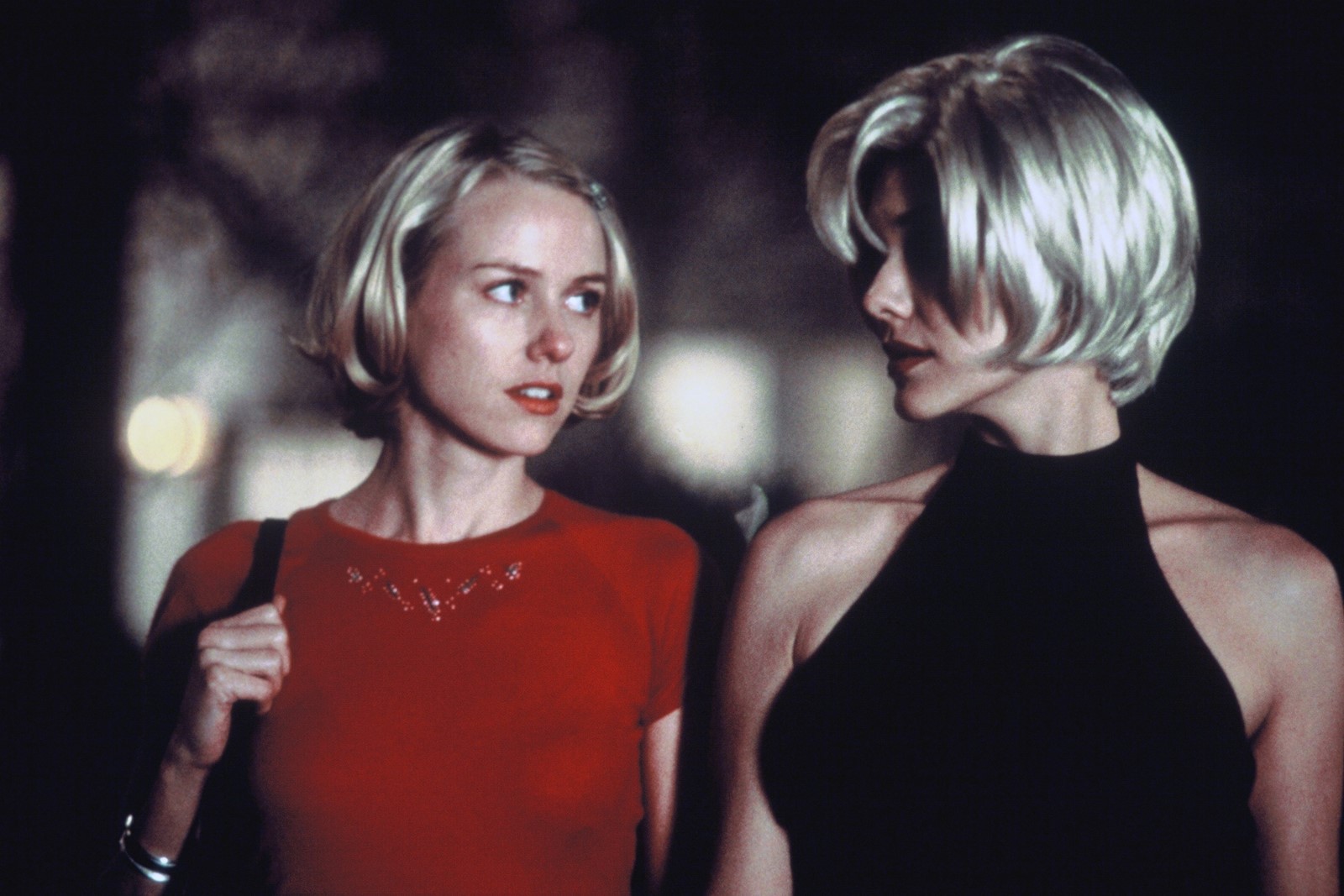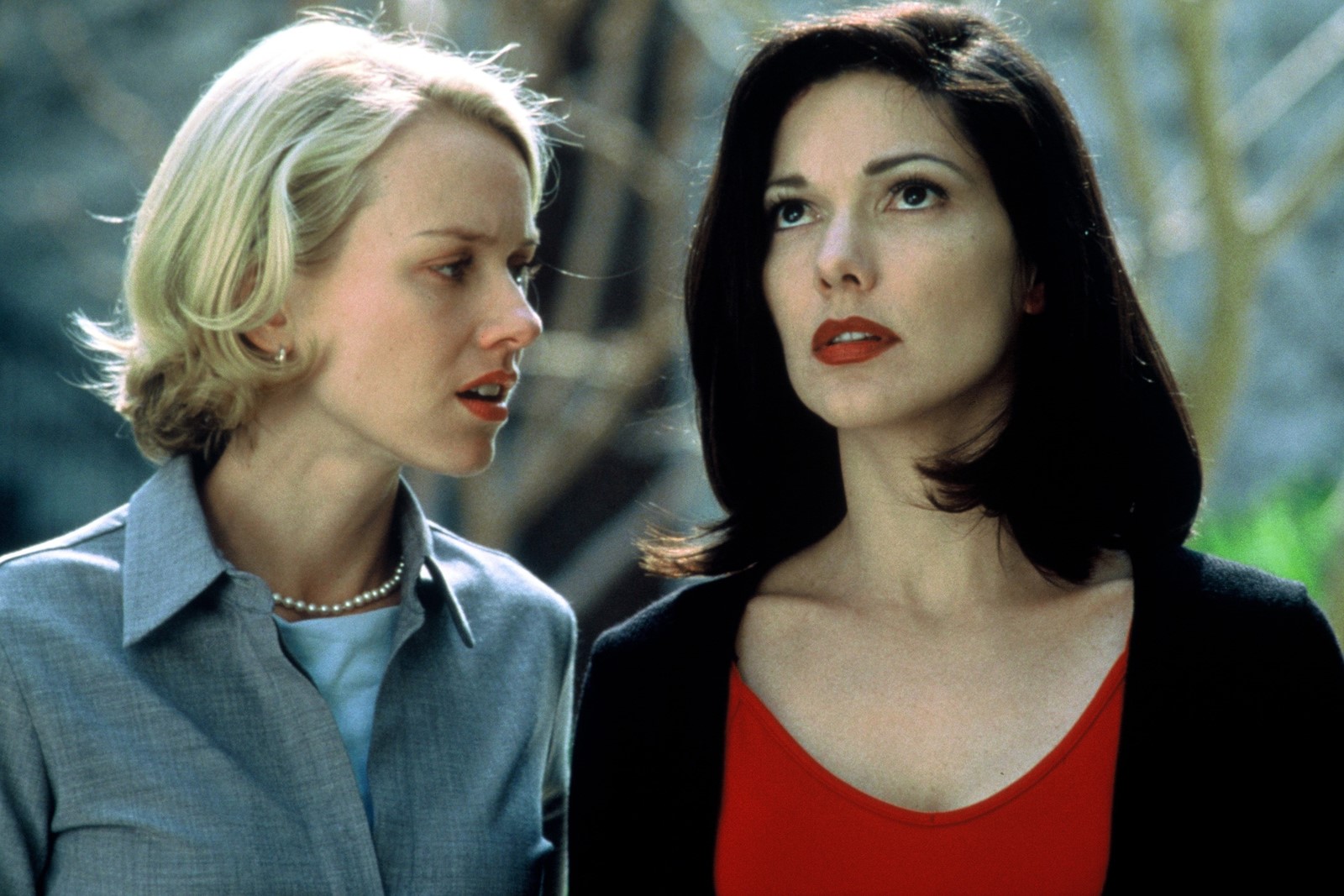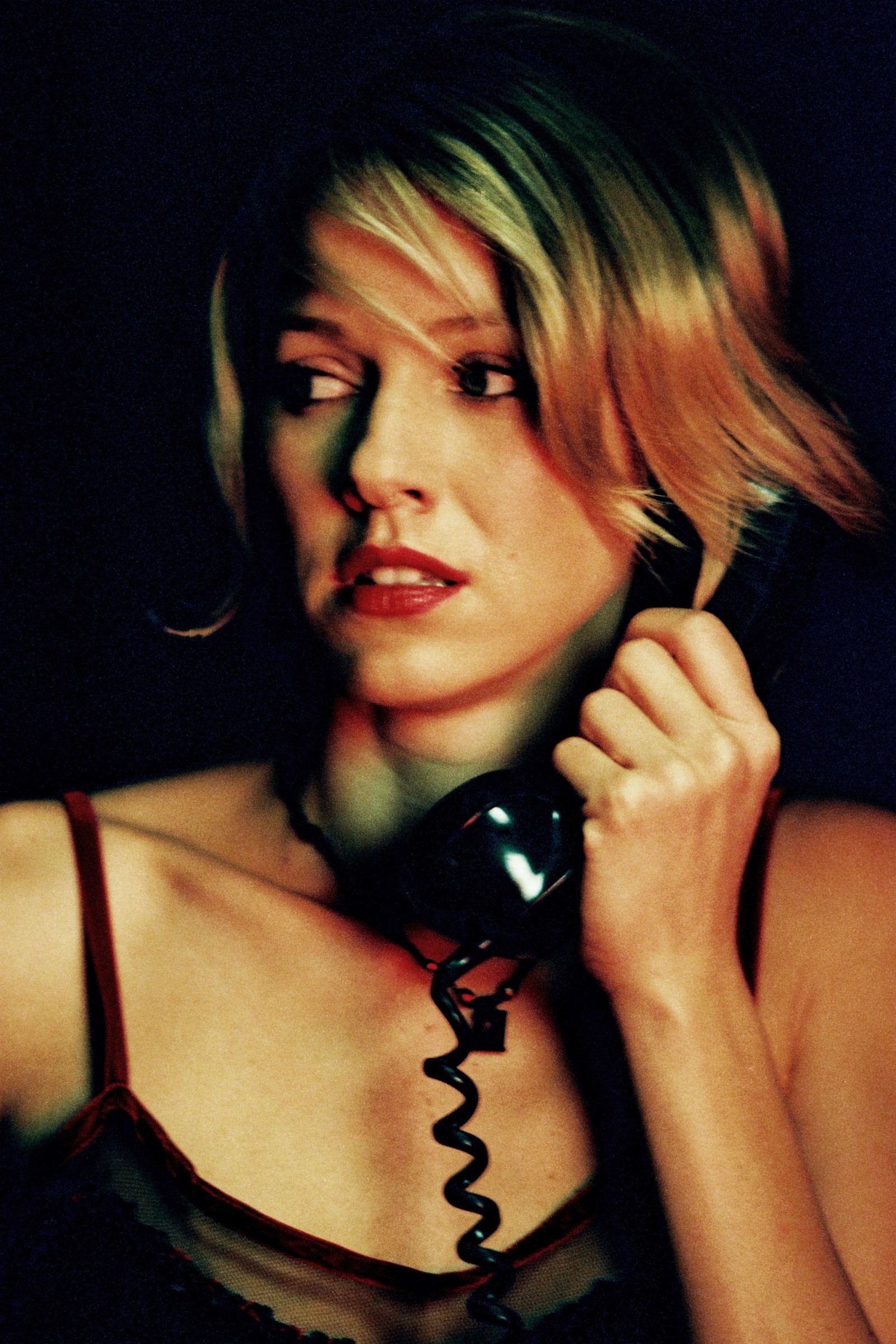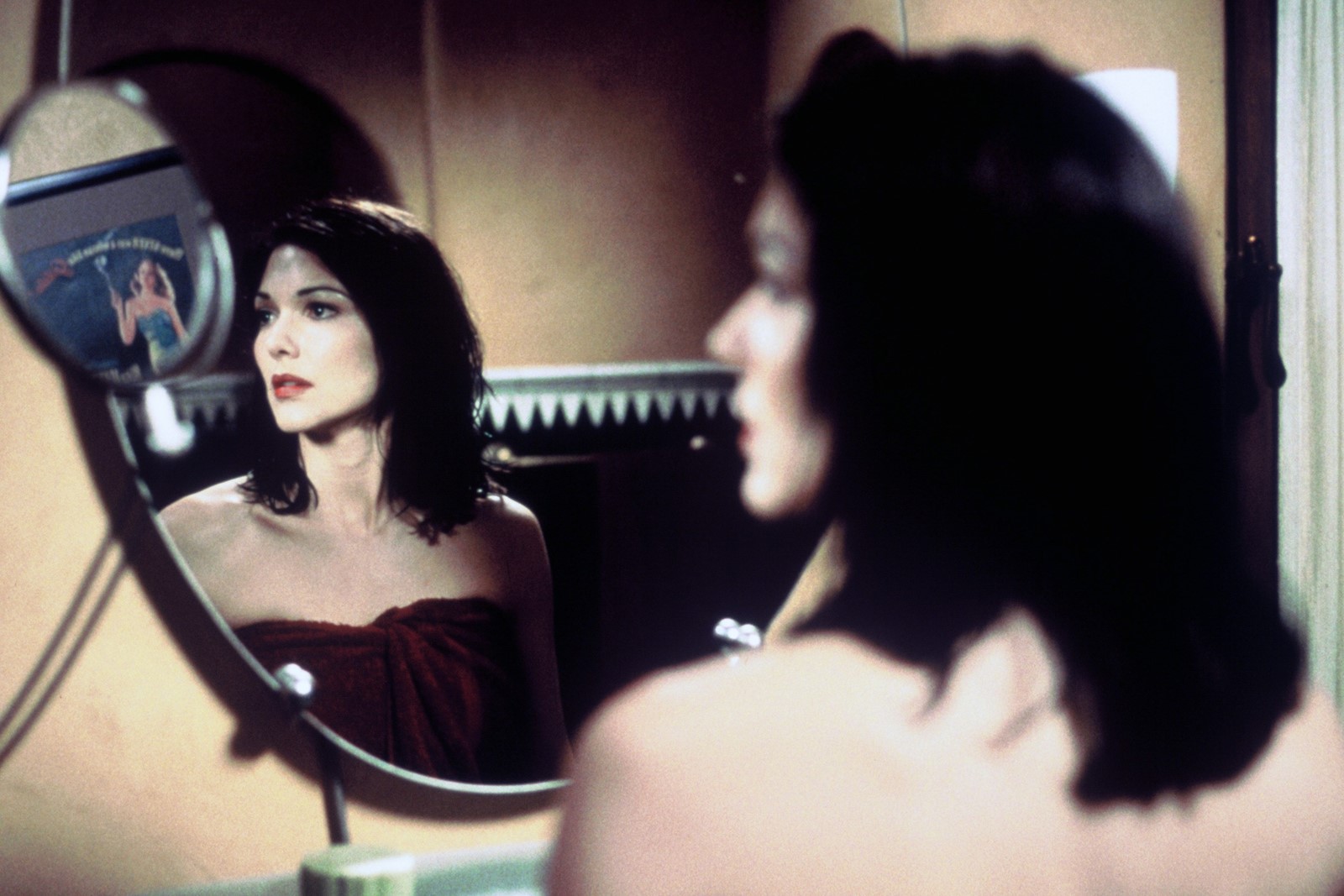This article was originally published on 13 March 2017.
By the age of 34, Mexican-American actress Laura Harring had almost entirely abandoned her hopes of making it as a Hollywood star. She had parted ways with her movie agent and thrown herself into music and theatre instead. But that all changed in January of 1999, two months before her 35th birthday, when she received a phone call saying that David Lynch had seen her photograph and wanted to meet her to talk about a part in his next project, a television series called Mulholland Drive. She was driving to the gym and was “so excited... that I crashed the car!” Upon arriving at her appointment with the feted director, the very next day, Harring was stunned to discover that her character, the glamorous yet vulnerable Rita, is also involved in a car crash within the pilot’s opening minutes. “I went into quiet mode for a bit, and then I kind of relaxed,” she tells us over the phone from her Beverly Hills home, speaking ahead of the masterful film’s re-release in a newly restored edition. “I thought that was some sort of signal from the universe that I was in the right place.”
When she walked into the audition room and met Lynch, he simply stared at her, nodded slowly, and said, “Good. Good.” She was then introduced to her soon-to-be-co-star Naomi Watts, who was feeling similarly disenchanted with the movie business at that time, having spent many years trying to secure her big break. But just as with Harring, Lynch had seen her picture and declared, “This is the girl!” (Or so it’s tempting to imagine it.) The director pretended to the actresses – who were both in Harring’s words “a little shy” – that he was conducting a filter test to put them at ease while he quietly evaluated their on-screen presence and chemistry. Intuition confirmed, both women were cast, thus setting the wheels in motion for their speedy ascent to movie stardom. “David has such a pure, specific vision,” Harring marvels. “He just knows what he wants, what works.”
Indeed, from the second Harring appears on screen, sitting in the back of a chauffeur-driven car in a black slip dress, deep cherry red lipstick and pendant pearl earrings, she is every inch the Lynchian leading lady: a sultry, beautiful brunette with a noir mystique, much like Isabella Rossellini’s Dorothy Vallens or Sherilyn Fenn’s Audrey Horne. Watts is similarly pitch perfect as the naive and relentlessly cheerful Betty, an aspiring actress, who arrives in Hollywood to find a stunned and bloodied Rita taking refuge in her aunt’s apartment, unable to remember who she is. Equally, when the plot flips in the film’s final segment, and Betty becomes the bitter and conniving Diane, while Rita morphs into the heartless Camilla, it’s startling and awe-inspiring to watch how ably each actress transforms.
“I remember David walking on the set, and seeing that the bed cover was white, and shouting, ‘Can we get some mood in here?’” – Laura Harring
Getting the best from his performers is one of Lynch’s great gifts, Harring explains. On film, his worlds resonate with artfully crafted unease; they are places where nothing can be taken for granted, where no answers are easily obtained, where a monstrous face or decaying corpse could appear to scare the living daylights out of you at any turn. But on set, the filmmaker cultivates a warm and welcoming bubble for his cast and crew – and it pays off. “He makes people feel safe and relaxed and then, as an artist, you can create very easily because you’re at peace,” she expands. “But, don’t get me wrong, he likes everything dark and moody. When we were shooting the amnesia scene – where I’m in bed and I say, ‘I don’t remember who I am’ – I remember David walking on the set, and seeing that the bed cover was white, and shouting, ‘Can we get some mood in here?’”

Just as Betty and Rita fervently hunt for clues in search of Rita’s true identity, Lynch continued to follow his gut for the duration of the shoot, allowing its direction to flourish instinctively. “One day, I was wearing a flower in this pinstripe Gucci suit I had on and he said, ‘Laura, stay right there! Remind me of this moment,’” Harring recalls. “That’s how he works – he takes a word, something somebody says, an image, and he creates an entire story around it.”
“One day, I was wearing a flower in this pinstripe Gucci suit I had on and he said, ‘Laura, stay right there! Remind me of this moment’” – Laura Harring
The most poignant example of this occurred when television network ABC viewed the pilot episode Lynch presented them with, and opted to drop the series. (“They thought it was too dark or something,” Harring explains. “David called us and said, ‘It’s dead in the water.’ We were so confused.”) A year and a half later however, the director showed it to StudioCanal producer Pierre Edelman, who was spellbound and funded Lynch to shoot some more material and turn it into a film instead. This was when the director conceived the movie’s infamous twist, and with it the iconic, highly charged sex scene between Harring and Watts – the upside of being freed from the shackles of television censorship. In this decision, Lynch was once again guided by a real-life event, Harring says: one day Lynch saw her playfully spank Watts, in an “innocent [way] like I would my sisters,” and thereafter devised the Betty-Rita/Diane-Camilla trysts.

“Once David got the funding to keep shooting, he wrote another 18 pages of script,” Harring recalls of finding out that the project was being revived. “He told me about the love scene and the nudity and naturally I felt very vulnerable,” she concedes, “but I trusted him.” By the time the second shoot was due to take place, the actress was in Canada making the Nick Cassavetes crime drama John Q with Denzel Washington. “I only flew in for two or three days, and then I had to take a red-eye back to Canada to continue filming,” she says. “David only wanted to shoot very specific scenes this time; he knew exactly what he was going to do, but no one else really knew anything. Of course, he had such a history of being a genius that we never worried or doubted, but when I saw how he had edited it, I was completely floored. I never thought it was going to be such a masterpiece, so intense and complicated and meaningful.”
“He told me about the love scene and the nudity and naturally I felt very vulnerable, but I trusted him” – Laura Harring
It’s impossible to argue. 15 years after its original release and Mulholland Drive has been hailed as the best film of the 21st century in two separate polls, continuing to pack a fresh, potent punch with each new watch, for a multitude of reasons. There’s the esoteric rhythm with which it unfolds; the air of mystery it expertly sustains, propelled by the wonderfully atmospheric soundtrack by Lynch and longtime collaborator Angelo Badalamenti; the poignant questions it raises about artifice and reality; the unforgettable cast of weird and wonderful characters; the strange sets and eerie lighting, and above all – a compound of all these factors – the mood: the inimitable, Lynchian mood that penetrates and lingers for hours after watching, as you ponder the myriad possibilities of its meaning.

Which bring us to the question that Harring gets asked most often, the one to which thousands of internet forums are dedicated: what is the film really about, what does it mean? “I love replying that it’s a journey,” she chuckles warmly, “a very individual one, just like your life. It’s for you to decide, I always say. To me, the movie talks about the ego and how we suffer when we compare ourselves to others. I think that in order to be really free and happy, you have to kill the ego: that’s what the dead body signifies at the end, in my mind. And of course it’s questioning whether we actually know what reality is; whether dreams are their own reality in some way. But like I said, it’s a journey that you as a viewer have to take inside your own mind – it’s not going to be handed to you on a plate – which is why I think it’s so completely timeless as a work of art.”
